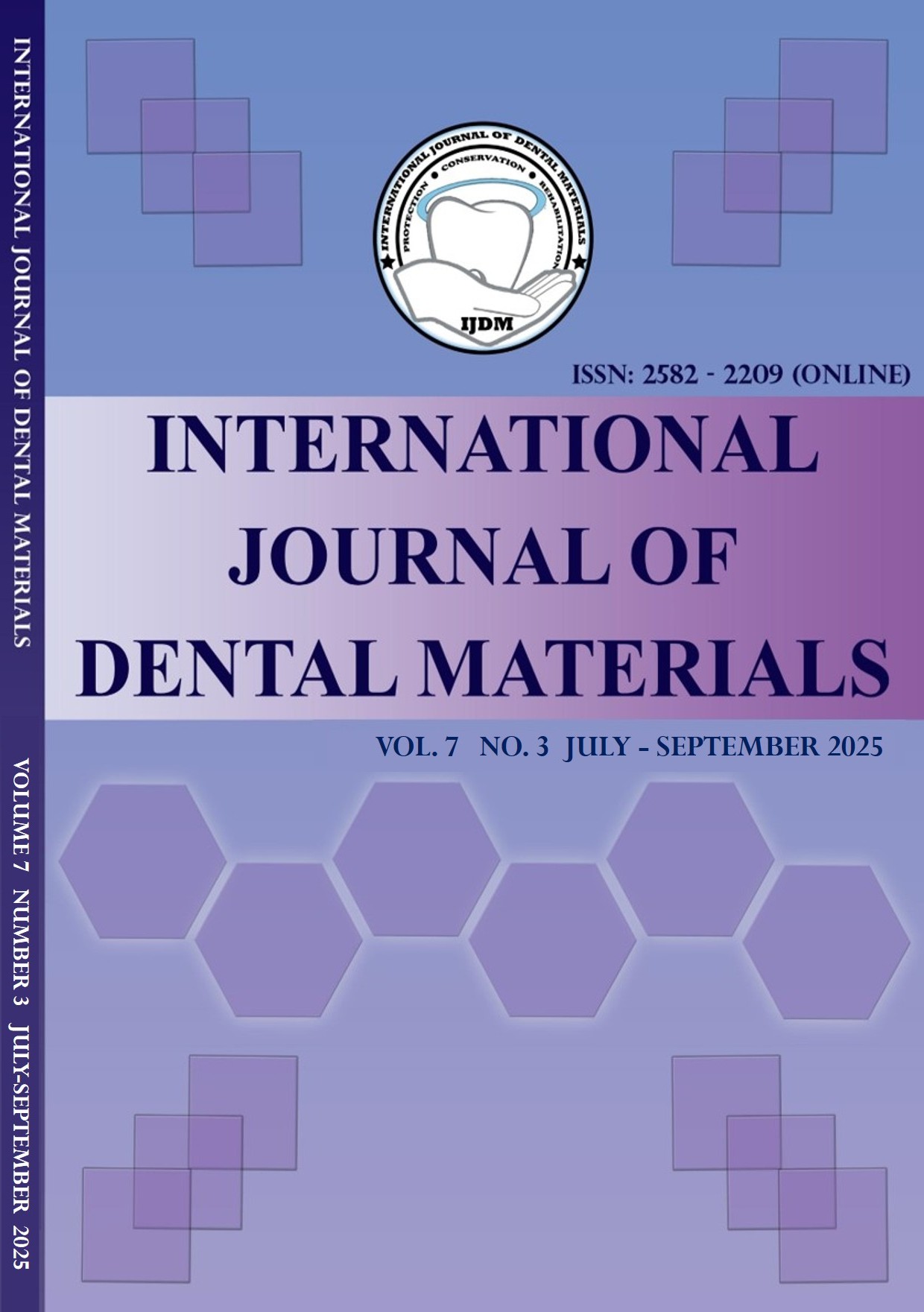Effect of 10-MDP-containing versus non-MDP Adhesives on delayed shear bond strength to enamel and dentine
Main Article Content
Abstract
Background: Effective bonding between restorative materials and dental substrates is critical for the longevity of composite restorations. Adhesives containing 10-MDP have demonstrated superior chemical bonding and durability compared to traditional self-etch systems.
Aim: To compare the shear bond strength (SBS) of an MDP-containing adhesive (Renew MDP) with two seventh-generation self-etch adhesives—Prime Restorite Bond 7 and Beauti Bond (Shofu).
Materials and methods: Thirty extracted human molars were sectioned to expose flat enamel and dentin surfaces. Samples were randomly divided into three groups with 10 (n=10) for each adhesive. Composite resin cylinders were bonded to the prepared surfaces following the manufacturer’s instructions. Shear Bond Strength was performed after 90 days using a universal testing machine at a crosshead speed of 1 mm/min. Data were analysed using one-way ANOVA and post-hoc Tukey tests (p < 0.05).
Results: Renew MDP showed significantly higher shear bond strength values to both enamel and dentin after 90 days compared to Prime Restorite Bond 7 and Beauti Bond (p < 0.05). Among the self-etch adhesives, Beauti Bond performed better than Prime Restorite Bond 7 but was still inferior to Renew MDP.
Conclusion: The MDP-containing adhesive (Renew MDP) exhibited superior shear bond strength, suggesting improved clinical performance compared to conventional seventh-generation adhesives.
Article Details
Section

This work is licensed under a Creative Commons Attribution 4.0 International License.
This work is licensed under a Creative Commons Attribution 4.0 International License.

